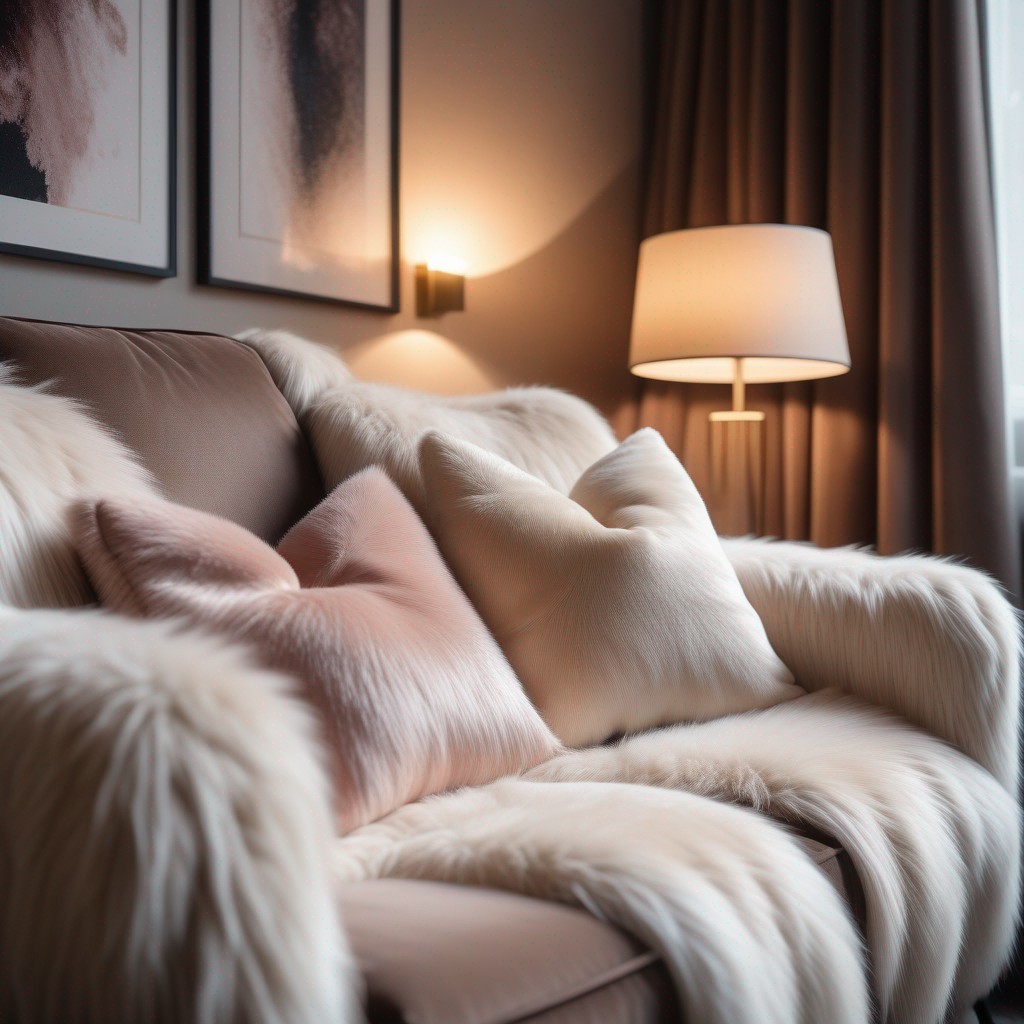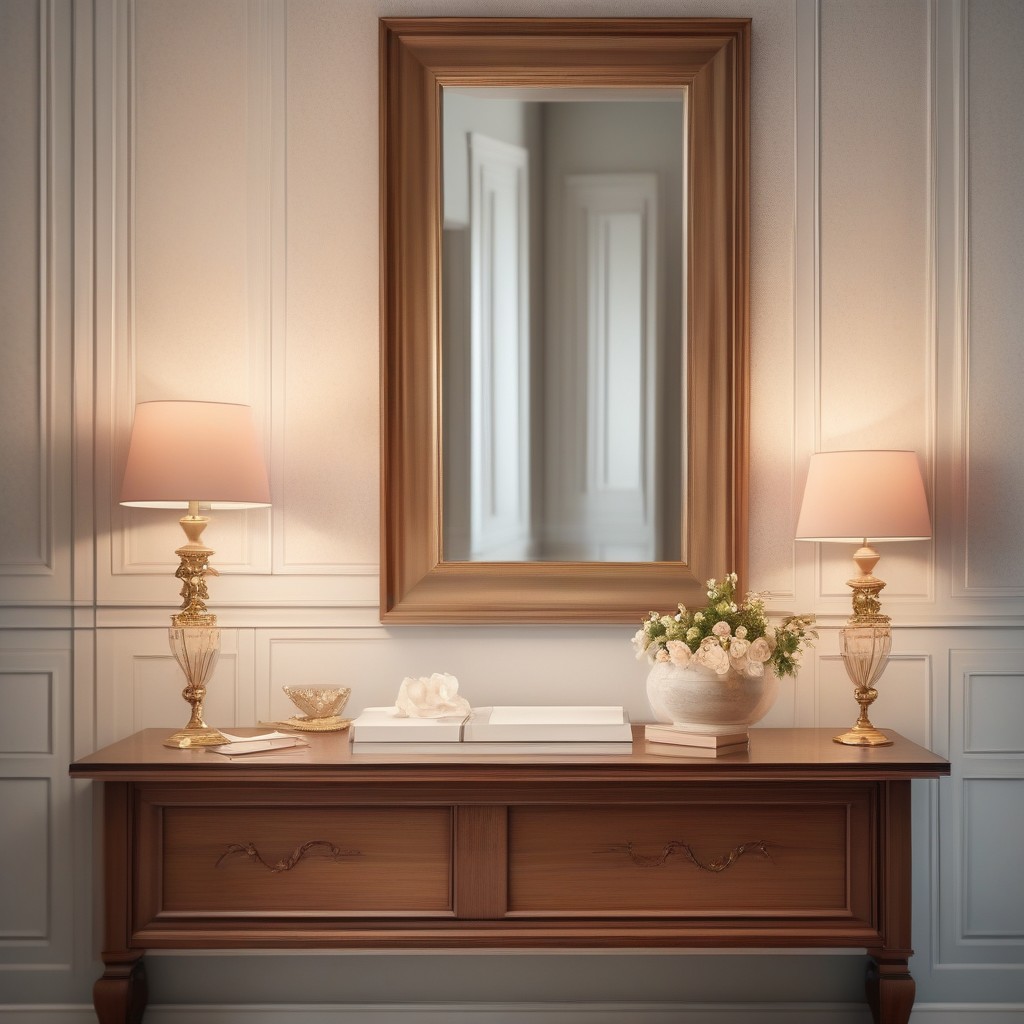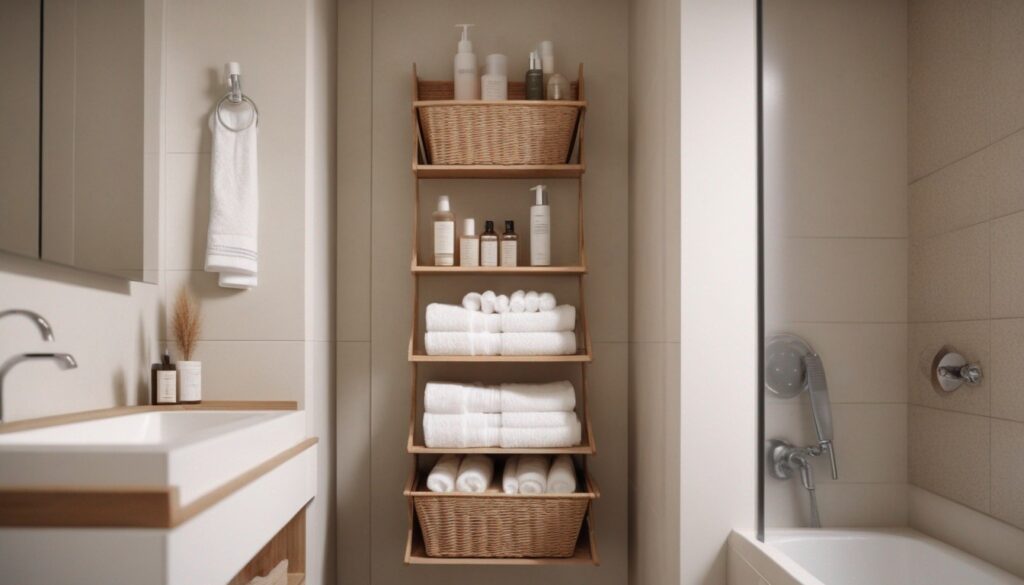Welcome back! I’m happy to have you join me for today’s exploration into the world of interior design. In this blog post, we’re diving deep into seven incredible ways to transform your home into a space that radiates luxury and elegance. If you’ve ever dreamt of making your home look more expensive without draining your bank account, you’re in for a treat. From artistic touches to clever design swaps, we’ve got a curated list of tips that will elevate every corner of your living space!

1. Decorative Pedestals: Elevating Spaces with Artistic Touch
In the realm of interior design, a trend that’s currently making waves is the use of decorative pedestals. The beauty of this trend lies not only in its contemporary allure but also in its timeless quality. Decorative pedestals serve as more than just functional pieces; they’re a statement of style and sophistication. Drawing inspiration from art galleries and museums, these pedestals bring a touch of the artistic and avant-garde into your living space. The trend has gained popularity for its ability to transform ordinary corners into focal points, creating a sense of curated elegance.

Tips on Incorporating Pedestals
Now, you might be wondering how to seamlessly integrate these pedestals into your home. Fear not, as we’ve got you covered with some expert tips:
- Corners and Nooks: Utilize empty corners or nooks in your home by placing a decorative pedestal. This not only fills the space but also adds a touch of artistic flair to areas that might have otherwise been overlooked.
- Entryways: Make a lasting impression by positioning a decorative pedestal in your entryway. It can serve as a welcoming piece of art, setting the tone for the design aesthetic throughout your home.
- Behind Sofas or Furniture: Instead of the typical side table, consider placing a decorative pedestal behind your sofa or beside other furniture pieces. This unconventional approach adds a layer of sophistication to your living area.
- Height Variations: Experiment with pedestals of different heights to create visually appealing groupings. This adds depth and interest, making your space feel carefully curated.
- Showcasing Art or Sculptures: Use the pedestal as a showcase for small art pieces or sculptures. This not only enhances the overall look but also brings attention to your chosen artwork.
- Hallways and Corridors: Elevate the design of hallways or corridors by strategically placing decorative pedestals. This breaks up the monotony and turns these often-overlooked spaces into captivating walkways.
2. Strategic Plant Selection: Greenery for Cohesive Decor
Adding greenery to your home is not just about bringing nature indoors; it’s an integral part of interior design that can elevate your space to new heights. In this segment, we delve into the art of strategic plant selection, focusing on how to choose plants that seamlessly integrate with your home decor style and providing examples of plant pairings that exude luxury and cohesion.
How to Choose Your Plants?
Understanding your home’s decor style is the first step to creating a cohesive and visually pleasing atmosphere. When it comes to plants, not all greenery complements every design theme. Whether your style is modern, traditional, eclectic, or somewhere in between, selecting plants that resonate with that aesthetic is crucial.

For instance, if your decor leans towards a modern and minimalist vibe, consider sleek and architectural plants like snake plants or fiddle leaf figs. On the other hand, if your style is more bohemian or eclectic, embrace the wild and lush with plants like monstera or spider plants.
Examples of Plant Pairings for a Luxurious and Cohesive Look
- Olive Trees with Eucalyptus Stems: The muted gray and blue-green hues of olive trees blend seamlessly with the similar tones in eucalyptus stems. This pairing creates a sophisticated and cohesive look that can be incorporated in various spaces.
- Fiddle Fig Trees with Tropical Plants: The vibrancy of fiddle fig trees complements the bright, lush appearance of tropical plants. This dynamic combination adds a touch of luxury and energy to your space, perfect for those who embrace a more lively decor style.
- Mixing Texture with Plants: Introducing texture through plants enhances the overall luxurious feel. Consider pairing smooth and sleek plants like snake plants with more textured foliage such as ferns or palms. This mix creates visual interest and depth in your decor.
- Matching Plant Colors with Decor Accents: Another strategic approach is to match the colors of your chosen plants with other decor elements. For example, if you have a predominantly neutral color scheme, opt for plants with subtle green tones to maintain a cohesive and elegant look.
3. Lampshade Swap: Modernizing Lighting with Tapered Shades
Lighting plays a pivotal role in shaping the ambiance of any space, and one impactful way to modernize and add a touch of luxury is through a lampshade swap.
In this section, we’ll explore the contemporary and luxurious aesthetic that tapered lampshades bring to the table, and provide valuable tips on finding and swapping lampshades for an instant upgrade.

Contemporary and Luxurious Look
Tapered lampshades, with their dynamic and sleek shape, are at the forefront of contemporary interior design. Unlike traditional barrel lampshades, the tapered variety adds a unique and modern touch to any lighting fixture. The design of these shades is characterized by a wider opening at the top that gradually narrows towards the bottom, creating an elegant and visually striking silhouette.
The luxurious appeal of tapered lampshades lies in their ability to diffuse light in a way that is both soft and focused. This not only enhances the overall mood of a room but also contributes to a more sophisticated and curated atmosphere. Tapered shades work exceptionally well in a variety of design styles, from modern and minimalist to transitional and even some traditional settings, making them a versatile choice for a contemporary upgrade.
Tips on Finding and Swapping Lampshades for an Instant Upgrade
- Thrift and Vintage Stores: Explore thrift stores and vintage shops for hidden treasures. Tapered lampshades are often found in these places, providing an affordable option for those looking to make a stylish swap.
- Home Decor Retailers: Visit home decor retailers and lighting stores to find a wide array of tapered lampshades in different sizes, colors, and materials. These establishments often carry trendy and up-to-date options to suit various design preferences.
- Online Marketplaces: Browse online marketplaces such as Etsy or eBay for unique and artisanal lampshades. This can be an excellent option for those seeking one-of-a-kind pieces that add a personalized touch to their space.
- DIY Options: For the creative souls, consider a DIY lampshade project. Purchase a plain, drum-shaped lampshade and modify it into a tapered shape using fabric, paint, or other decorative elements. This allows for a customized look tailored to your specific design vision.
- Consider Size and Proportions: When swapping lampshades, pay attention to size and proportions. A tapered shade that complements the scale of your lamp base ensures a harmonious and visually pleasing result.
- Experiment with Colors and Textures: Don’t shy away from experimenting with different colors and textures. A change in the color or material of your lampshade can significantly impact the overall aesthetic of the room.
4. Texture Integration: Creating Visual Interest with Mixed Textures
In the realm of interior design, the role of textures is often underestimated. However, it’s a crucial element that can transform a space from ordinary to extraordinary. In this segment, we’ll delve into the importance of textures in achieving a luxurious aesthetic and provide suggestions on how to seamlessly incorporate different textures through pillows, rugs, and decor items.
The Importance of Textures
Texture is the secret sauce that adds depth, dimension, and visual interest to any room. It’s the tactile quality that not only enhances the overall aesthetic but also evokes a sense of luxury. In luxurious design, the interplay of various textures is often a defining feature. Spaces that lack texture can feel flat and uninspired, while a judicious use of mixed textures creates a dynamic and visually compelling environment.
Whether in the form of soft and plush fabrics, rough and tactile surfaces, or a combination of both, textures bring richness to a room. They create layers that catch the eye, making the space feel more curated and sophisticated. The key is in the balance—finding the right mix of textures that complement each other and contribute to a cohesive and luxurious look.

Suggestions for Incorporating Textures
- Throw Pillows: Experiment with throw pillows in different fabrics and patterns. Mix and match textures like velvet, faux fur, or embroidered fabrics. This not only adds comfort but also introduces a tactile and visually appealing element to your seating areas.
- Rugs: Rugs are an excellent way to introduce texture to a room. Opt for rugs with varying pile heights, patterns, and materials. For example, a plush shag rug paired with a flat-weave rug can create a striking contrast, adding depth to the floor space.
- Decor Items: Infuse your space with textured decor items such as baskets, sculptures, or vases. Natural materials like wood, stone, or woven elements bring an organic and tactile quality that contributes to a luxurious ambiance.
- Mixing Textures in Furniture: Consider furniture pieces that boast mixed textures. For instance, a sofa with a textured fabric paired with smooth, polished metal or wooden legs can create an interesting visual dynamic.
- Wall Coverings: Experiment with textured wall coverings, such as wallpaper with embossed patterns or textured paint finishes. These elements add a layer of sophistication to your walls, contributing to the overall luxurious feel.
- Layered Bedding: In the bedroom, layering different textures in bedding—think crisp cotton sheets, a plush duvet, and a knitted throw—creates a sumptuous and inviting atmosphere.
5. Focus on Entryway: Making a Grand First Impression
The entryway of your home is the first glimpse visitors get into your personal style and the atmosphere they can expect throughout the rest of your living space. In this section, we’ll emphasize the significance of a well-designed entryway and provide practical tips on choosing and styling an entryway table to ensure a grand and lasting first impression.

Tips on Choosing and Styling an Entryway Table
- Size and Proportion: Select an entryway table that fits the scale of your space. It should be large enough to make a statement but not overpower the area. Consider the proportions of your entryway to ensure a harmonious and well-balanced look.
- Practicality and Style: The entryway table should seamlessly blend practicality with style. Opt for a design that accommodates your needs, whether it’s providing a surface for keys, mail, or a place to drop off everyday items. Combining functionality with an aesthetically pleasing design ensures that your entryway serves both practical and decorative purposes.
- Mirror Magic: Integrate a mirror above the entryway table to add depth and create the illusion of a larger space. Mirrors also serve a functional purpose by providing a last-minute check before heading out.
- Statement Lighting: Illuminate the entryway with a stylish and impactful light fixture. Whether it’s a pendant, chandelier, or wall sconce, the right lighting not only adds to the visual appeal but also enhances the overall ambiance.
- Personalized Decor: Infuse your entryway with personal touches. Decorate the table with items that reflect your style—be it family photos, artwork, or decorative elements that hold sentimental value. This transforms the space into a representation of your personality.
- Seasonal Rotation: Consider rotating decor items seasonally to keep the entryway fresh and dynamic. Swap out accessories or introduce seasonal flowers to adapt the space to the changing atmosphere.
- Functional Storage: Choose entryway tables with built-in storage solutions or pair the table with decorative baskets or boxes. This helps keep clutter at bay and maintains a tidy appearance.
6. Decorative Boxes: Hiding Clutter in Style
In the quest for an organized and aesthetically pleasing home, decorative boxes emerge as unsung heroes. In this section, we’ll explore the dual functionality of decorative boxes—serving as both organizers and stylish decor elements. Additionally, we’ll provide suggestions on how to seamlessly incorporate decorative boxes in different areas of the home.
Exploring the Use of Decorative Boxes
Decorative boxes are a clever solution for those seeking to maintain a clean and stylish living space while effectively hiding away clutter. These boxes go beyond their practical purpose of storage; they also contribute to the overall decor, adding a touch of sophistication to any room.

Whether used in the entryway, living room, bedroom, or any other space, decorative boxes allow you to tuck away small items, keeping surfaces uncluttered and visually appealing. From remote controls and chargers to paperwork and miscellaneous items, these boxes provide a chic camouflage for the everyday mess.
Suggestions for Incorporating Decorative Boxes
- Entryway Elegance: Place decorative boxes in the entryway to collect and conceal items like keys, mail, or sunglasses. Choose boxes that complement the overall design of the space, adding an elegant touch to the welcoming area.
- Living Room Organization: Use decorative boxes in the living room to organize and hide away remote controls, magazines, or electronic accessories. Opt for boxes that match the color palette and style of your furniture to maintain a cohesive look.
- Bedroom Serenity: Enhance the serenity of your bedroom by incorporating decorative boxes on dressers or nightstands. These can be utilized for storing jewelry, accessories, or other personal items, contributing to a clutter-free and tranquil environment.
- Bathroom Tidiness: Organize toiletries, towels, or other bathroom essentials in decorative boxes. Select moisture-resistant materials for longevity and style, creating an organized and spa-like atmosphere.
- Office Chic: Keep your workspace organized with decorative boxes on your desk or shelves. Conceal office supplies, paperwork, or cables in stylish boxes that elevate the overall aesthetic of your workspace.
- Children’s Room Playfulness: In children’s rooms, use colorful and playful decorative boxes to store toys, art supplies, or other knick-knacks. This not only adds a whimsical touch but also encourages tidiness.
- Bookshelf Harmony: Integrate decorative boxes into your bookshelves to create visual interest and hide smaller items. Coordinate box styles with your book collection for a harmonious and organized display.
- Closet Neatness: In closets, use decorative boxes to store accessories, shoes, or seasonal items. Label the boxes for easy identification and a streamlined, organized closet.
7. Homogeneous Design Style: Cohesiveness for Elegance
In the pursuit of creating a truly elegant and sophisticated living space, the concept of a homogeneous design style takes center stage. This section encourages readers to define their design style and offers practical tips on implementing a consistent aesthetic throughout their entire home.

The foundation of a homogeneous design style lies in a clear understanding of one’s personal aesthetic preferences. Readers are encouraged to embark on a self-discovery journey to define their unique design style. This involves considering color schemes, textures, furniture styles, and decorative elements that resonate with their taste and vision for an ideal living space.
By pinpointing their design style—be it modern, traditional, eclectic, or a fusion of multiple styles—readers can establish a solid framework for creating a cohesive and harmonious home environment. This self-awareness becomes the guiding principle for making intentional design choices.
Tips on Implementing a Consistent Design Style
- Color Palette Mastery: Begin by selecting a color palette that reflects the chosen design style. Whether it’s a monochromatic scheme, muted tones, or vibrant hues, consistency in color creates a unified and elegant look throughout the home.
- Consistent Furniture Language: Maintain a consistent language in furniture selection. If the chosen style is modern, opt for sleek and minimalist furniture pieces. For a more traditional style, incorporate classic and ornate furniture that aligns with the overall aesthetic.
- Unified Textures and Patterns: Integrate textures and patterns that harmonize with the chosen design style. Whether it’s the smooth surfaces of modern design or the intricate patterns of traditional styles, keeping textures and patterns aligned contributes to cohesiveness.
- Art and Decor Consistency: Select art and decor items that complement the established design style. This includes wall art, sculptures, vases, and any decorative elements. Consistency in these details reinforces the overall aesthetic.
- Lighting Design Continuity: Pay attention to lighting fixtures throughout the home. Whether it’s pendant lights, chandeliers, or sconces, ensure that the chosen fixtures align with the established design style, contributing to a seamless and elegant atmosphere.
- Flooring and Wall Finishes: Maintain a consistent approach to flooring and wall finishes. Whether it’s hardwood floors, tiles, or specific wall treatments, the uniformity in these foundational elements anchors the design style.
- Continual Design Reflection: Regularly revisit and reflect on the established design style to ensure consistency. As new elements are introduced or existing ones evolve, the key is to align them with the overarching aesthetic vision.
- Gradual Transformation: Recognize that achieving a homogeneous design style is a gradual process. As budget and time allow, make intentional choices to bring each area of the home into alignment with the established style.
End Note: Design Your Signature Space
As you implement the tips and ideas shared in this post, remember the importance of going all-in for a design style that resonates with you. A cohesive and well-thought-out space not only elevates the aesthetic but also contributes to a sense of balance and harmony in your daily life.
However, amidst the pursuit of design perfection, don’t underestimate the power of personal touches. Your home should tell your story, reflecting your experiences, memories, and individuality. Integrate meaningful decor elements, cherished mementos, and personal artifacts that transform a house into a true home. Happy decorating!
Leave a Reply